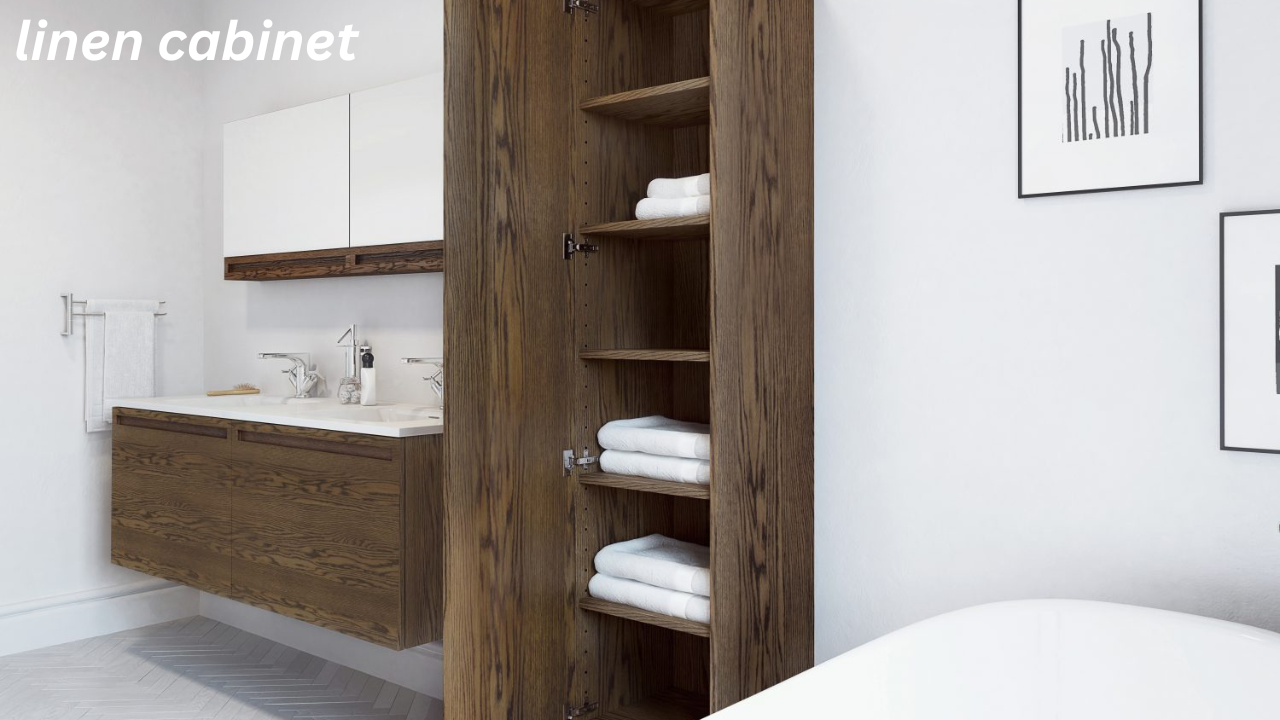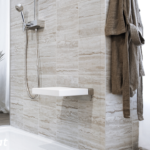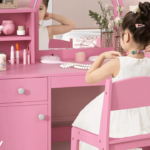A linen cabinet is more than just a storage unit—it’s a game-changer for home organization and interior style. Whether tucked into a bathroom corner or standing tall in a hallway, linen cabinet are designed to keep your towels, sheets, and toiletries in order while enhancing the overall aesthetic of your space. They offer a practical solution for anyone who values both functionality and elegance in their living environment.
The beauty of a linen cabinet lies in its versatility. From compact apartments to sprawling homes, there’s a cabinet to fit every layout and need. Imagine walking into your bathroom or hallway and seeing everything neatly arranged—no more rummaging through crowded closets or overstuffed drawers. With the right linen cabinet, you create not just a space to store your linens, but a sense of peace and order in your home.
This comprehensive guide will walk you through everything you need to know about linen cabinets—from the various types available to choosing the right one for your space, to styling and maintenance tips. By the end, you’ll be ready to find or upgrade to the perfect linen cabinet that suits your lifestyle and complements your home beautifully.
Types of Linen Cabinets
Freestanding Linen Cabinets
Freestanding linen cabinets are standalone pieces that do not require installation, making them a popular and flexible choice for homeowners. These units come in a variety of sizes and styles, from narrow towers that fit snugly in tight corners to wider units with multiple shelves and drawers. Their greatest advantage lies in their mobility; you can reposition them as needed, making them ideal for renters or anyone who likes to change room layouts frequently.
These cabinets typically feature a combination of open shelving, closed doors, and sometimes even pull-out baskets, allowing you to customize your storage. Whether you prefer to hide clutter or display folded towels neatly, freestanding options offer the best of both worlds. However, they can consume floor space, so careful measurement is key when selecting one for smaller bathrooms or hallways.
Built-in Linen Cabinets

Built-in linen cabinets are designed as a permanent part of your home’s structure, usually recessed into walls or placed within existing nooks. These are ideal for maximizing space without disrupting foot traffic. Built-ins often offer a clean, seamless look that integrates well with the room’s overall design, making them a favorite among homeowners during renovations or new builds.
The advantage of a built-in cabinet is its ability to blend aesthetics with utility. These cabinets often provide more storage than freestanding units and can be customized with adjustable shelving or pull-out hampers. The downside? Installation can be expensive and requires professional help, making this a less feasible option for renters or those looking for a quick fix.
Choosing the Right Linen Cabinet
Assessing Your Space
Before selecting a linen cabinet, it’s essential to evaluate the space where it will be placed. Start by measuring the area, taking note of ceiling height, door swings, and existing fixtures. For bathrooms, consider moisture levels and ventilation—opt for materials that resist warping and mold. If you’re placing a cabinet in a hallway or utility room, make sure there’s enough clearance for drawers or doors to open fully.
Placement is key to both function and style. In a small bathroom, a narrow tall cabinet can utilize vertical space without overwhelming the room. In larger areas, a wider unit with open shelves can become a decorative feature. The goal is to strike a balance between storage capacity and spatial harmony.
Material Options
Linen cabinets are available in a variety of materials, each with unique benefits. Solid wood, such as oak or walnut, offers durability and timeless appeal. Engineered woods like MDF and particleboard are cost-effective and come in a wide range of finishes, though they may not hold up as well in high-moisture environments.
Metal or hybrid materials are modern alternatives that offer industrial charm and excellent durability. If sustainability is a priority, bamboo cabinets are an eco-friendly option that adds a warm, natural look to your space. Whatever material you choose, ensure it aligns with both your functional needs and aesthetic preferences.
Organizing and Styling Your Linen Cabinet
Decluttering and Categorizing
Once your linen cabinet is in place, organizing it thoughtfully is crucial. Start by removing all items and categorizing them—towels, bed linens, toiletries, cleaning supplies. Discard or repurpose anything that’s worn out or hasn’t been used in months. This step helps prevent overcrowding and keeps your cabinet functional.
Next, assign a dedicated shelf or basket for each category. Place frequently used items at eye level and seasonal or spare items on higher or lower shelves. Use clear bins or labeled baskets to make contents easily identifiable. This structured approach not only maximizes space but also ensures you can quickly find what you need.
Storage Hacks and Styling Tips
Consider adding accessories like shelf dividers, pull-out trays, or fabric bins to further enhance organization. Over-the-door hooks or hangers can be added for bonus storage of small items like washcloths or bathrobes. Shelf liners can also protect the cabinet’s interior and add a pop of color or pattern.
Styling your linen cabinet can elevate it from a utility piece to a design statement. Fold towels in thirds for a spa-like appearance, add a small plant or scented diffuser for a touch of freshness, and choose coordinating baskets for a cohesive look. Open shelving? Treat it like display space and arrange items artfully.
Maintenance and Care
Maintaining your linen cabinet ensures it remains functional and hygienic. Regularly dust shelves and wipe down surfaces with a mild cleaner. For bathroom cabinets, use moisture-resistant finishes and keep the area well-ventilated to prevent mold. Periodically rotate and refold linens to avoid musty odors or creases.
Check your inventory monthly to restock essentials and remove unused or worn-out items. Cedar sachets or lavender pouches can help keep your linens fresh and deter pests. With a little upkeep, your linen cabinet will stay in top shape, continuing to serve as a beautiful and practical storage solution.
Conclusion
Linen cabinets are more than mere storage—they’re essential components of an organized and stylish home. From versatile freestanding units to sleek built-in solutions, there’s a perfect linen cabinet for every space and style. With thoughtful selection, clever organization, and regular maintenance, your cabinet will serve as a tidy, functional, and aesthetically pleasing part of your home for years to come.
FAQs
What should be stored in a linen cabinet?
You can store towels, bed linens, extra pillows, toiletries, and seasonal bedding. Some people also use linen cabinets for cleaning supplies or guest essentials.
How do I prevent musty smells in my linen cabinet?
Ensure good air circulation, use moisture absorbers, and rotate linens regularly. Add lavender sachets or cedar blocks for natural freshness.
Can I use a linen cabinet in a small bathroom?
Yes, opt for a narrow or wall-mounted unit that makes use of vertical space without crowding the room.
What’s the best material for a bathroom linen cabinet?
Moisture-resistant materials like treated wood, metal, or plastic composites work best in humid environments like bathrooms.
How often should I reorganize my linen cabinet?
A monthly check is ideal to keep things tidy, fresh, and stocked. Seasonal updates are also helpful for rotating blankets or holiday linens.
You May Also Read: https://topbuzusa.com/shower-seat/





